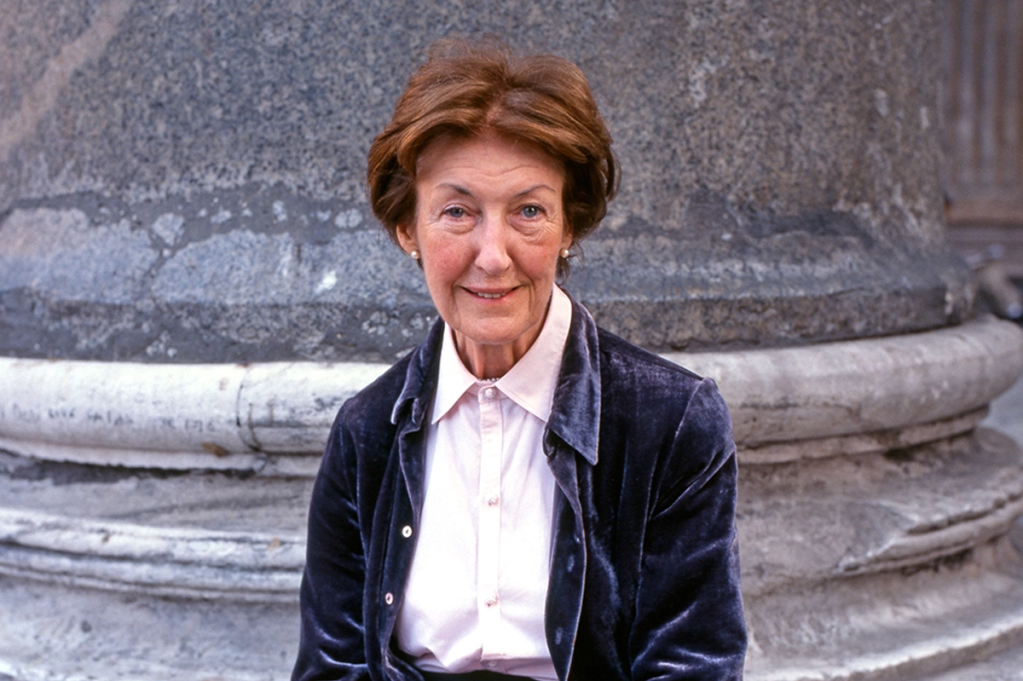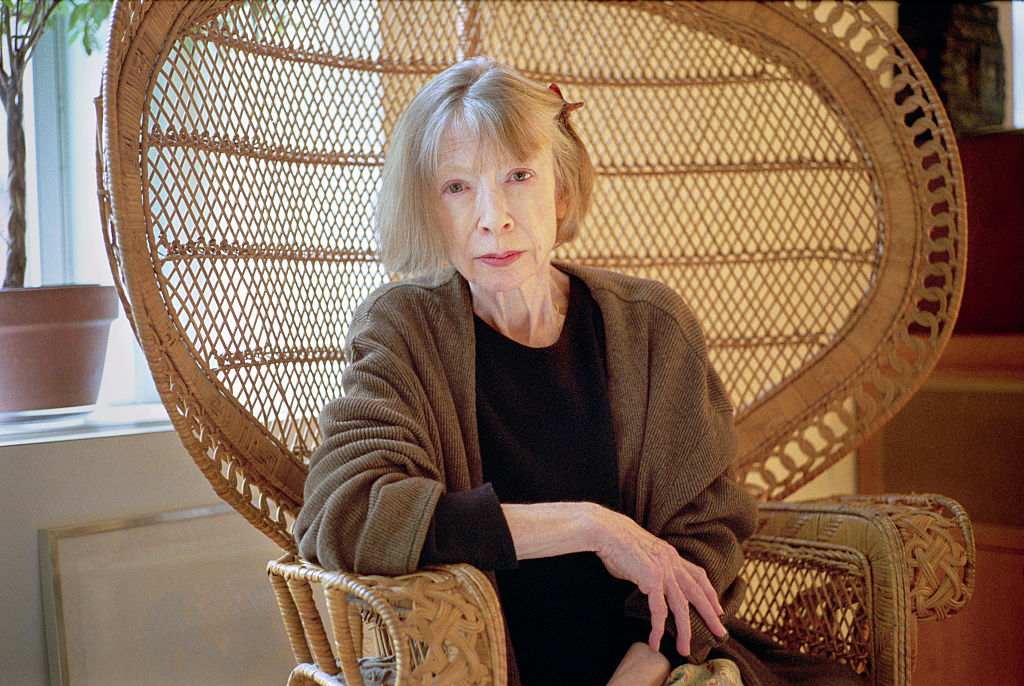Shirley Hazzard’s “untimeliness” is a recurrent aspect in most descriptions of her, both the writing and the person. She came to represent “a vanished age of civility”: there is something Victorian about her novels, despite the last of them, The Great Fire, being published in 2003, by which time she was starting to resemble “an exotic bird blown off course.”
This first biography, by Brigitta Olubas, an academic who has already written a monograph on Hazzard and edited her collected short stories, gives us a portrait of the self-created artist throwing off the “suffocating gentility” of postwar life in her native Australia, its “tyranny of distance” from what she saw as the swim of things, the permanent elsewhere, and seeking a life of books and worldly high culture. Her parents were both British imports, Welsh Reg and Scottish Kit, who met while working on the construction of Sydney Harbor Bridge. Hazzard’s own life, especially in its early, striving years, would involve regular attempts to traverse seemingly impossible divides.
She would later argue with W.H. Auden himself that poetry can make something happen. In her case, a love of Giacomo Leopardi’s poetry seduced her into learning Italian in order to read him in the original. Were it not for this, and Hazzard’s realization that “I would have to rescue myself,” she might have continued to work in offices such as those in which she found employment at the UN in New York, having previously dabbled in a little “rudimentary intelligence” as a teenager in Hong Kong.
Hong Kong had once offered Hazzard her first glance at cosmopolitanism, the family having followed the diplomat Reg overseas immediately after World War Two. Equally formatively, she met Alec Vedeniapine there, the first great love of her life and later the inspiration for the sweeping melodrama The Great Fire, published more than fifty years after he ended their (unconsummated) relationship. Vedeniapine was a White Russian of high principle and “evident knowledge,” and the teenage Hazzard, on having to leave their furtive romance behind when her sister Valerie became gravely unwell, suffered operatic heartbreak.
The definitive moment of her early life was her decision, seemingly on a whim, to leave New York for Naples and her career progression — her Leopardi-inspired Italian being enough to get her a year-long posting there from the UN when American life had begun to sour following further disappointments in love. Characteristically, it was Naples itself and its apparent timelessness that most drew Hazzard: “If Virgil were to sail one day into the Bay of Naples, he would recognize it,” she once remarked.
Her year there would later be transmuted into the novel The Bay of Noon, but, while she was yet to become a writer, it was in Italy that she would be “released into a larger life,” having been introduced to the cultured Vivante family in Siena at their “sand-colored” Villa Solaia — a place “free of pettiness, filled with poetry.” The house was regularly filled with artists, thinkers and intellectuals, and offered Hazzard a lost childhood of sorts, “heightened by consciousness,” as well as the setting for one of her earliest published stories. Her mother’s untreated mental illness, and the fracturing of her parents’ relationship due to Reg’s infidelity, had made her real childhood less idyllic and further blighted her adult years.
It was through Solaia associations that Hazzard met William Maxwell of the New Yorker. He would become her ideal reader and enduring friend; her account, somewhat embossed, of receiving her first acceptance letter in the kitchen at Solaia is morally if not factually true. If her literary career started in earnest through the connections she made, so would her romantic life be shaped by literary association. Muriel Spark pointedly introduced her to Francis Steegmuller, already an eminent biographer and Flaubert scholar (and twenty-six years her senior), and their ensuing marriage “gave her grounds and the wherewithal to fashion her life and herself around the coordinates of literature, integrity and love.”
After a rocky beginning, Steegmuller offering at first only an amitié littéraire, thanks to an existing enthusiasm, their marriage became a bedrock of stability, their habit of splitting time between New York and Italy enough to cause her thwarted, unappeasable mother to remark upon Shirley’s “lovely life” with barbed emphasis. But Olubas makes it clear that Hazzard’s maturity wasn’t all sunlit Caprese suppers, noting her belief that “an occasional lifting of the head seems necessary.” Hazzard would publish several non-fiction critical works on what she saw as the failings of her old employer, the UN, as well as short stories based on the same subject, delaying the completion of her masterpiece Transit of Venus in the process.
Through Steegmuller, she found herself immersed in an older, elevated world that brought with it an accompanying weight — she would have to care for her ailing husband while still a relatively young woman and after his death use her memoir of a sparring friendship with Graham Greene, Greene on Capri, as a means of channeling some of her grief for Steegmuller and their blissfully companionable years.
While evidently a champion of Hazzard’s work, Olubas makes it clear that the writer had limitations, personal and professional. She “spoke in arias” at times, was an inveterate name-dropper and could be cutting and intransigent — “I hate change” being both assertion and conclusion. Her disappointment shaded into something patronizing when she re-encountered Vedeniapine later in life, viewing his simple farming existence as a renunciation of his potential. A number of her other friendships were tested to breaking by her being “relentless and difficult.”
For all that, it’s clear that the willpower involved in transforming her life from “sea-girt, southerly, sundered” beginnings to one of “cultivation through passionate reading” was a singular, heroic act. Steegmuller once remarked about the study of poets: “One cannot truly do it for a ‘purpose.’ Only for love.” Olubas’s biography demonstrates that for Hazzard, to whom “love mattered as much as politics,” poetry was the great, lasting force of self-rescue.
This article was originally published in The Spectator’s UK magazine. Subscribe to the World edition here.

























